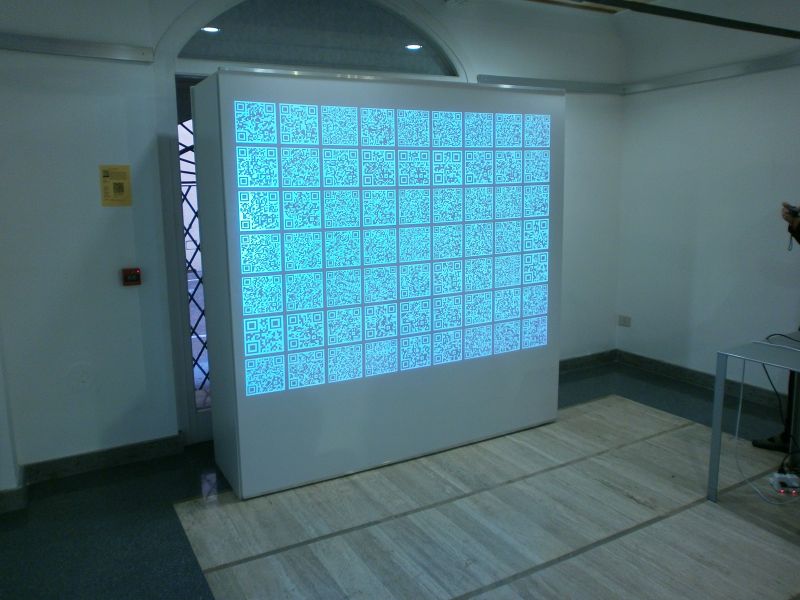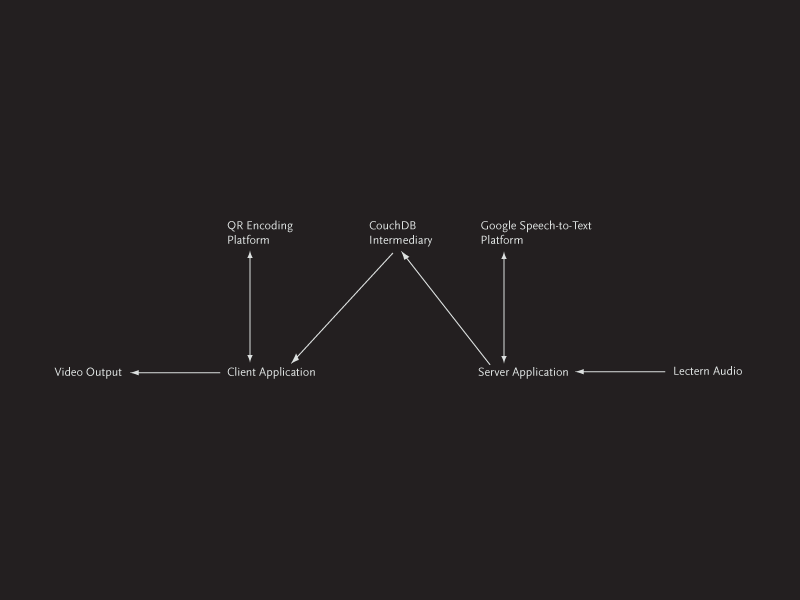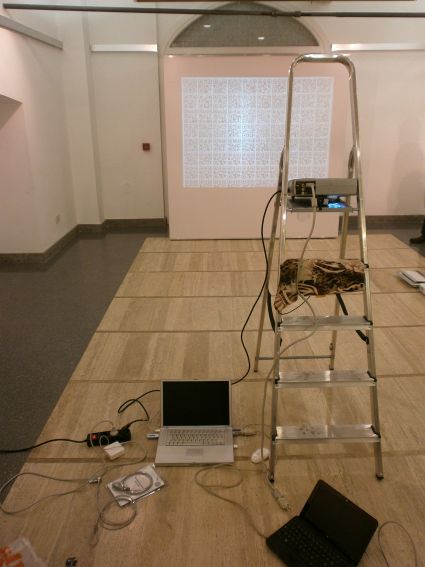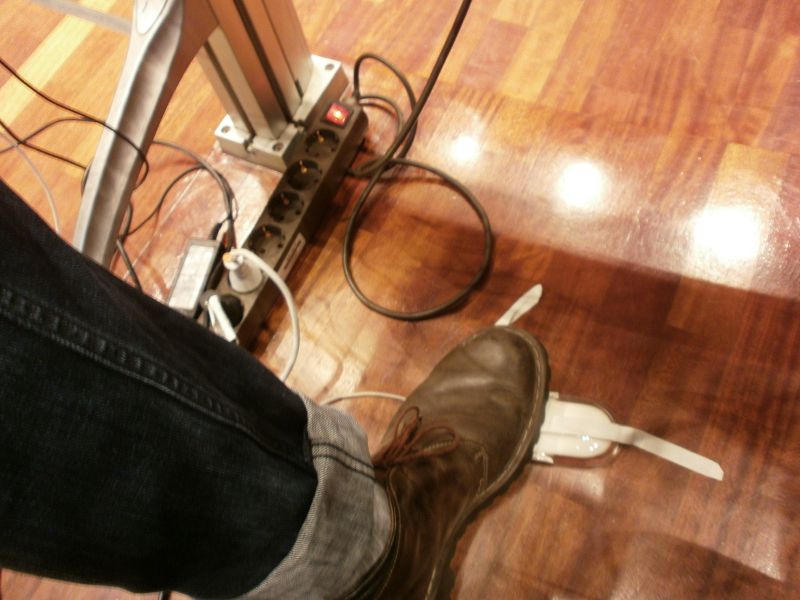| Line 10: | Line 10: | ||
of visual signifiers which only machines can read and write is | of visual signifiers which only machines can read and write is | ||
becoming increasingly commonplace in areas once solely the realm | becoming increasingly commonplace in areas once solely the realm | ||
of the human-readable. Walls Have Ears is a generative installation | of the human-readable. ''Walls Have Ears'' is a generative installation | ||
that gently prods this brave new world of synthetic literacy by also | that gently prods this brave new world of synthetic literacy by also | ||
engendering the machine with the ability to listen. Over the duration | engendering the machine with the ability to listen. Over the duration | ||
of Generative Art 2011 in Rome, the machine was continuously | of ''Generative Art 2011'' in Rome, the machine was continuously | ||
overhearing human presenters’ speech direct from the lectern. | overhearing human presenters’ speech direct from the lectern. | ||
In much the same manner humans acquire a foreign spoken language, | This environment exploits the highly subjective nature of | ||
realtime artificial speech-to-text transcription to distill a dynamic, if not | |||
somewhat idiosyncratic, living document of the proceedings. Displayed | |||
on a subtle wall-sized QR video assemblage in an adjacent exhibition, | |||
the system's understanding of what is happening is both a compelling visual | |||
abstraction, as well as a reasonably faithful account, provided, of | |||
course, one has a machine that will graciously serve as an interpreter. | |||
In much the same manner humans acquire a foreign spoken language, | |||
the most talented artificial speech-to-text transcription relies heavily | the most talented artificial speech-to-text transcription relies heavily | ||
on situated cognition, and as such, also exhibits the peculiar tendency | on situated cognition, and as such, also exhibits the peculiar tendency | ||
Revision as of 15:01, 2 February 2012
Interface Design - Zeitmaschinen
Walls Have Ears
Jason M. Reizner
The recent onslaught of QR technology has meant that the occurrence
of visual signifiers which only machines can read and write is
becoming increasingly commonplace in areas once solely the realm
of the human-readable. Walls Have Ears is a generative installation
that gently prods this brave new world of synthetic literacy by also
engendering the machine with the ability to listen. Over the duration
of Generative Art 2011 in Rome, the machine was continuously
overhearing human presenters’ speech direct from the lectern.
This environment exploits the highly subjective nature of realtime artificial speech-to-text transcription to distill a dynamic, if not somewhat idiosyncratic, living document of the proceedings. Displayed on a subtle wall-sized QR video assemblage in an adjacent exhibition, the system's understanding of what is happening is both a compelling visual abstraction, as well as a reasonably faithful account, provided, of course, one has a machine that will graciously serve as an interpreter.
In much the same manner humans acquire a foreign spoken language, the most talented artificial speech-to-text transcription relies heavily on situated cognition, and as such, also exhibits the peculiar tendency to hear something other than what was actually said. Interpolating rhythm, cadence and context, the machine builds its own account of what has transpired, and leaves behind a document that is as elastic, disjointed and poetic as any narrative penned by a mere person.
Eavesdropping Server, Proceedings of GA2011 Conference
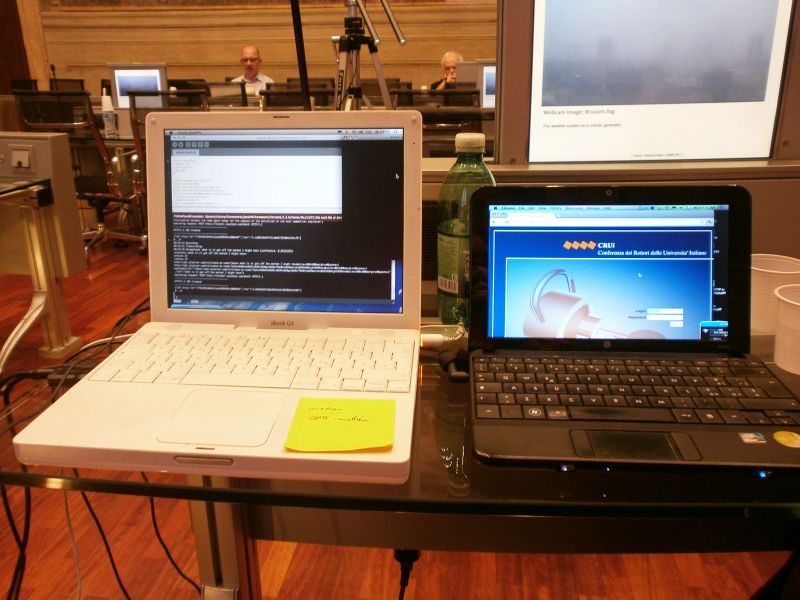
Installation Hardware, Exhibition Vernissage, Galeria Angelica
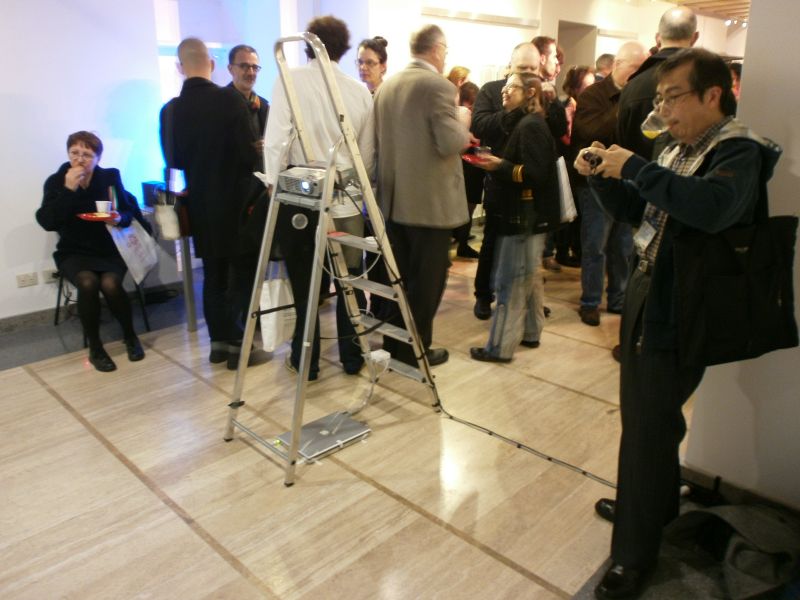
Installation Output, Exhibition Vernissage, Galeria Angelica
